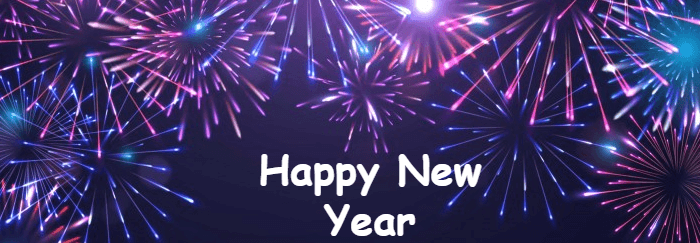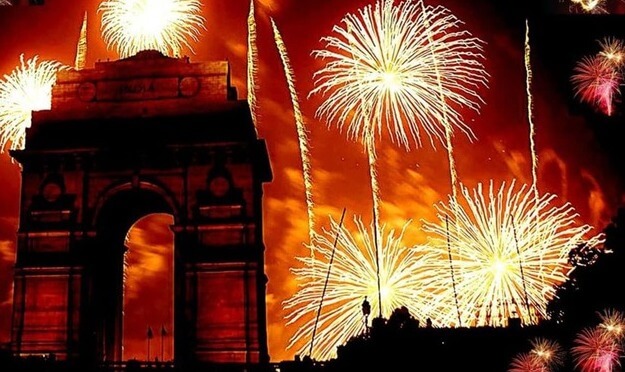New Year EssayWhen the New Year arrives, the atmosphere is filled with thrill, enthusiasm, newness and happiness. In general, celebration on a massive level is done while celebrating the Gregorian new year, i.e. on 1st January; it is also said to be the new year day as per the Julian calendar. Julius Caesar was the emperor of Rome and was the first to declare 1st January a national holiday. He named the month after the name of the Roman god of doors and gates having two faces (forward and backwards-looking), Janus. Hence, the last night of 31st December is celebrated along with the welcome party of the New Year. The very first New Year was celebrated in Babylon over 4000 years ago. But, it is said to be celebrated on 21st March. At present, it is due to the influence of the west, 1st January is celebrated as the New Year all over the world. The enthusiasm is seen in everyone prior to 2 weeks. Some get excited as soon as the last month (December) starts. Every other person is seen asking about the others' New Year celebration plan and sharing their excitement about the day. Some are seen busy making new resolutions for the New Year. There are very few people who can be seen making their plans for the coming year. A new year marks the beginning of a year of 365 days. 
How is New Year celebrated?There is a lot of celebration in western countries than anywhere else. They gather together to celebrate. People wear new clothes and greet and embrace each other. As soon as the clock clicks on the midnight of 31st December, everyone greets Happy New Year. Entertainment takes place on a massive stage to celebrate this festival worldwide. A lot of celebration is done by people to remember and make the passing year memorable. Also, almost every country celebrates this day with ostentatious displays. Some countries perform a show of special fireworks, which have a mesmerizing look. Some countries also declare New Year's Eve as a holiday, and hence people over there pre-plan a trip with their family to spend time together at a specific location and celebrate there. Some special programs are also hosted on this evening, the last day of the year. The wealthy hosts invite their friends and relatives to big parties, play games, eat, dance and enjoy. Various delicacies are prepared to keep this day memorable. There are very tasty dishes, beverages, and music at these parties organized by the rich. Here, people dance, sing, bid goodbye to the passing year and welcome the coming year with a grand procession. Due to the increased tour, every hotel is booked, and only things about New Year are discussed everywhere. The exchange of gifts takes place in wealthy households, where sweets, flowers and greeting cards are given to loved ones. Various organizations organize parties, DJ nights, dance and singing competitions, fireworks, etc., during the New Year Event. Many of the hotels and merchant shops provide unique New Year offers and discounts. Since the Christmas day passes before the New Year, there is usually an everyday festive season sale already running on. In some cultures, especially in western countries, New Year is welcomed from the day of Christmas itself. Here, a holiday of five days is given to celebrate both the eve altogether with family and friends. The market is illuminated with bright coloured lighting and decorated to bring on a festive vibe. There is an unusual movement, a lot of the hustle and bustle, in the market, which mark this special day. Some take on resolutions to make a positive step towards any of the things or work they lag in. These resolutions are a kind of oath which keep them motivated to work upon their goals with dedication and determination. Every age group has an interest in having such resolutions. Children are also filled with lots of festive excitement. They receive new clothes, gifts, sweets and blessings. It makes them happy. Schools organize several holistic development programs to celebrate the New Year on these few days between Christmas and New Year's. Various programmes, such as singing competitions, sports events, rangoli competitions, debating, dancing competitions and others are organized. Also, special prayers are sung. This brings in them the New Year vibe, which is hence spread by them as if it was a fragrance of the perfume. Congratulatory messages and greetings are shared through various social media platforms. It has been a trend running over there for a long time. People share their success stories and happy memories of the year and motivate others through these platforms. Importance of New YearNew Year has special importance in our life. It has a huge significance. We get a lot of motivation to do new work, as there comes hidden energy from the new day of the New Year, which inspires us and leads a life of renewed enthusiasm and joy. Like any other festival, the New Year brings in some changes; it takes in energy and hence carries a lot of importance. However, there are some people who become sentimental and get nervous and sad about the passing year. But, it is a time to cheer up and remember all the important incidents of the going year. We should be grateful for all the positive happenings of the previous year, and there should be a will to rectify the mistakes committed in the year. You must decide to focus on becoming a better human being than you were in the going year. The coming year brings on new hope, ideas, possibilities, and enthusiasm. It brings in positivity, which should be channelled in a proper way to be more productive. New Year has importance in everyone's life. It gives us a chance to learn from our mistakes and move ahead with experience and positivity. It provides our life with a new dimension and energy. The enthusiasm makes our life even better. Hence, it is widely believed that the New Year brings in new hopes and happiness. New Year in IndiaIn India, the traditional New Year days are celebrated per the religion and the calendar. But, due to the changing world and western influence, almost all the people also celebrate 1st January as New Year, with the traditional one being it is observed with rituals. In many places in India, Bhajan Sandhya, Kalash Yatra, and Kavi Sammelan are also hosted. At the same time, some of them do some noble work to start their year. People donate blood to start the first day of their year with noble work, like feeding cows in the cowshed and helping the needed ones. Traditional New Year in IndiaIn India, there are different regions and religions where the New Year is celebrated on different days. The Hindu New Year is generally celebrated as the start of Diwali and its nearby days. The houses are cleaned, and saffron flags are displayed on the top of the houses. Programs of Bhajans and Kirtans are organized on this auspicious occasion in temples and religious places. As per the Islamic calendar, Muharram is the day considered New Year for Islam. The days are selected based upon the calendar which is followed, the lunar calendar or the solar calendar. 
The Lunar CalendarAs the moon revolves around the earth, it takes the same time to rotate its path for once. Hence, it shows the same face that it has every day to the planet at specific times. A new moon appears after every 29.5 days. This is called a synodic month, and the lunar calendars are created based on the synodic month. The New Year is celebrated on the first day of the month of Chaitra (March-April). The New Year is hence celebrated as a day of festival Ugadi in Andhra Pradesh, Karnataka, Telangana, and by the name of Gudhi Padwa in Maharashtra. There are also some people who take into consideration the days in between Sankranti as a month to start the New Year. Few are there who take the days in between consecutive Purnimas into consideration. The next day of Diwali is observed as the New Year in Gujarat. According to the Hindu calendar, it comes in the month of Kartik on Shukla Paksha Pratipada. As per the lunar calendar, this is the first month of the New Year. However, it is spring when the New Year is celebrated in other parts of the country. Regions and their New Years that are celebrated according to the Lunar Calendar are as follows -
The Solar CalendarThe solar calendars keep track of days using the tropical years. In this calendar, the time is calculated using vernal equinoxes. As per this calendar, one year comprises 365 days, with five hours, 48 minutes and 46 seconds, which are counted as one day every four years. This calendar has been used since 1751, when the United Kingdom was told to use the Gregorian calendar. For the areas following the sonar calendar, the New Year comes in April on the 14 or 15. The region which celebrates the new years are Rongali Bihu in Assam, Baisakhi in Bangladesh, Poila Boishakh in Bengal, Pana Sankranti or Odia Nababarsa in Odisha, Vishu in Kerala, and Puthandu in Tamil Nadu. Regions and their New Years that are celebrated according to the Solar Calendar are as follows-
Facts about the New Year
Next TopicOnline Shopping Essay
|
 For Videos Join Our Youtube Channel: Join Now
For Videos Join Our Youtube Channel: Join Now
Feedback
- Send your Feedback to [email protected]
Help Others, Please Share









